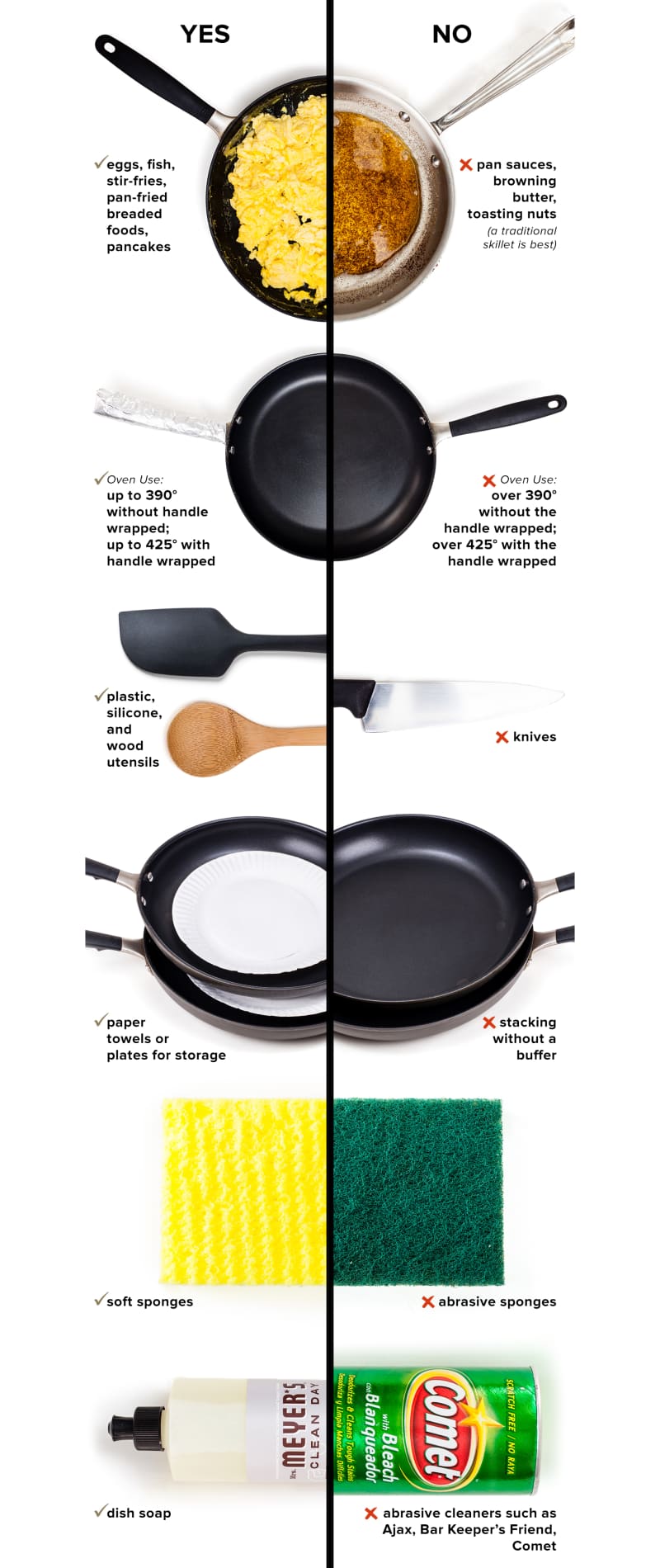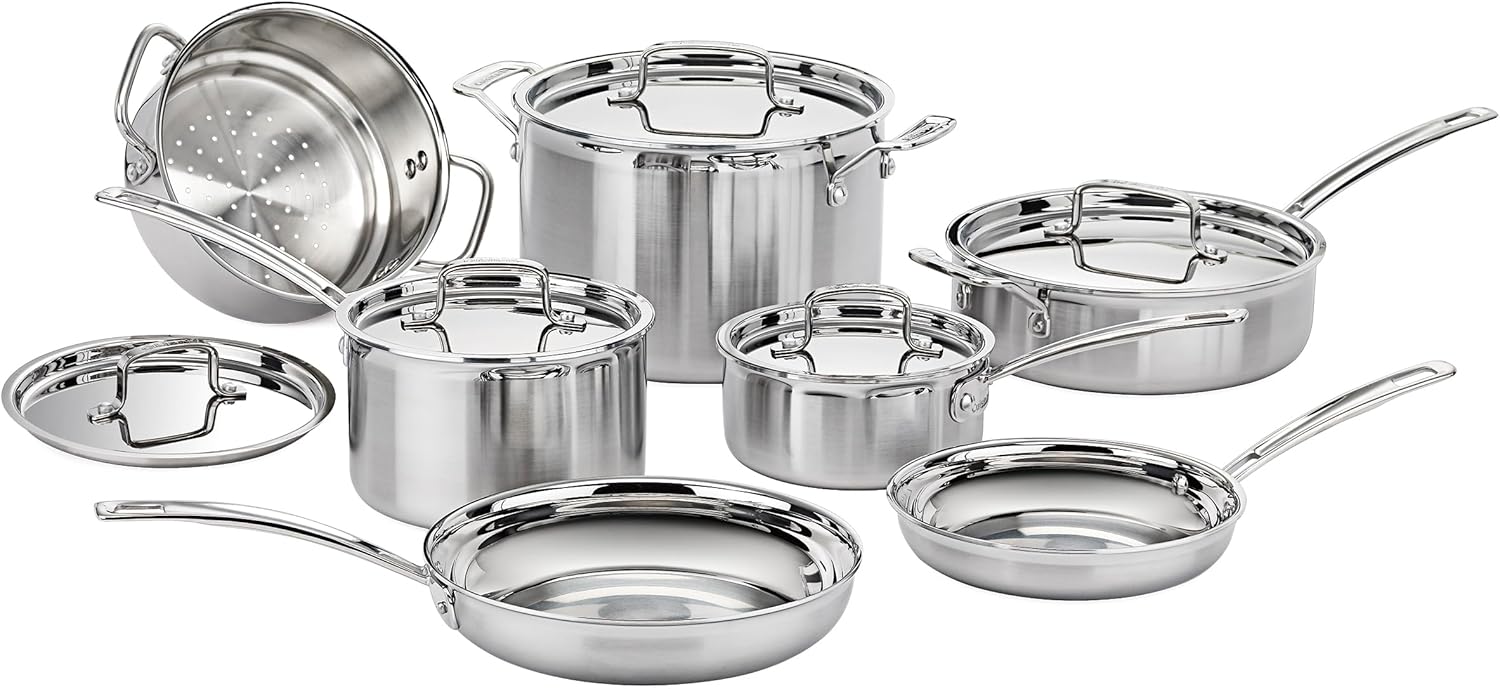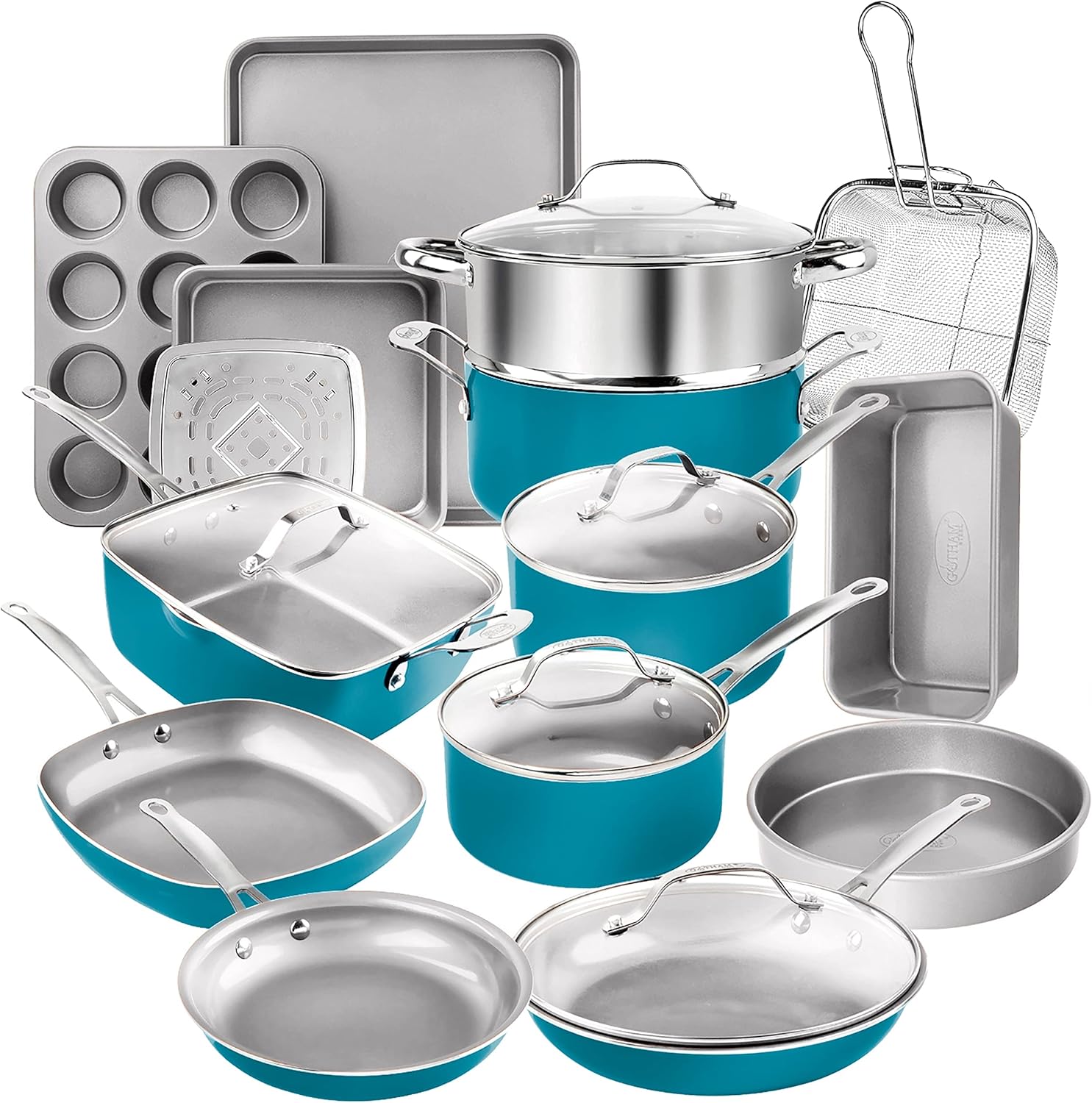To determine if a pan has Teflon, check for a non-stick surface and a label indicating PTFE or Teflon. Most Teflon pans also have a smooth, sleek appearance.
How Do You Know If a Pan Has Teflon:Understanding the composition of your cookware is essential for both health and culinary reasons. Teflon, the brand name for a type of polytetrafluoroethylene (PTFE), is known for its non-stick properties, making it a popular choice for frying pans and other cookware.
Recognizing Teflon-coated pans is straightforward; they typically feature a distinctive, uniform, and glossy finish. These pans should also carry a label or stamp on the bottom stating that they contain PTFE or are branded as Teflon. Since its invention in the 20th century, Teflon has revolutionized the cooking industry, promising easy food release and simple clean-up. Despite its benefits, it’s crucial to use Teflon pans correctly to avoid damaging the non-stick surface and to ensure they remain a safe and reliable tool in your kitchen arsenal.
Introduction To Teflon In Cookware
Introduction to Teflon in Cookware brings us to a common feature in modern kitchens. Teflon, a brand name for a type of non-stick coating, makes cooking and cleaning easier. This material coats many pans and pots. But, not everyone knows how to identify Teflon cookware.
The Prevalence Of Teflon
Teflon coats countless kitchen tools. Its smooth surface stops food from sticking. This makes both cooking and washing up simple. Most households own at least one Teflon item. Recognizing Teflon cookware is key for informed choices.
- Look for a smooth, glossy finish.
- Check the label or bottom for “PTFE” or the Teflon brand.
- Feel the surface. Teflon is slippery to the touch.
Health Concerns Associated With Teflon
Teflon’s safety sparks debate. When overheated, it can release harmful fumes. These fumes pose risks to both human health and pets. Being aware helps in making safer cooking choices.
| Temperature | Risk Level |
|---|---|
| Up to 260°C (500°F) | Safe |
| Above 260°C (500°F) | High Risk |
Signs of overheating include:
- Smoke from the pan.
- A chemical smell.
- Discoloration of the coating.
Choose cookware wisely. Consider health impacts along with convenience.
Visual Inspection Tips
Visual inspection tips can reveal if a pan has Teflon. Look at the pan’s surface. It should show specific features. Teflon coatings have a unique look. Know these features to identify Teflon pans.
Characteristic Appearance Of Teflon Coatings
Check the pan’s surface. Teflon usually appears smooth and even. Its color is often black or dark gray. The finish is matte, not shiny. Teflon coatings feel slippery to touch.
Signs Of Wear And Scratches
Examine the pan for scratches. Use good light. Teflon pans can scratch easily. Over time, they show wear. Look for any discolored spots. These may indicate damage. Scratches can reduce non-stick properties. They also risk peeling Teflon into food.
Remember, safety is crucial. Replace scratched Teflon pans. It ensures healthy cooking. It also maintains the non-stick quality.
The Water Droplet Test
Wondering if your pan is coated with Teflon? Try the Water Droplet Test. It’s simple and fast. This test helps you identify Teflon pans without guesswork. Let’s dive into how to conduct this insightful test.
Conducting The Test
- Heat the pan on the stove until it’s warm, not hot.
- Sprinkle a few drops of water onto the pan’s surface.
- Observe how the water behaves.
Interpreting The Results
After conducting the test, look for these signs:
- Beading: Water forms round, tall beads.
- Mercury-like behavior: Droplets glide effortlessly.
- No sticking: Water doesn’t stick or spread thinly.
These outcomes suggest a Teflon coating. Other surfaces react differently. With this test, you can identify Teflon pans quickly.

Credit: sciencenotes.org
Heat Response Method
Identifying if a pan has Teflon coating can be tricky. The Heat Response Method offers a simple test. This method involves observing how a pan reacts to heat. It helps distinguish Teflon pans from other non-stick cookware.
Performing The Heat Test
To perform the heat test, follow these steps:
- Ensure the pan is clean and dry.
- Place the pan on the stove and turn on the heat to a low setting.
- Watch how the pan reacts as it heats up.
- Teflon pans typically heat up quickly and evenly.
- Look for a uniform color change as a sign of Teflon.
Safety Precautions
When performing the heat test, safety comes first. Keep these tips in mind:
- Avoid high heat to prevent releasing toxic fumes.
- Use a kitchen thermometer to monitor the pan’s temperature.
- Do not leave the pan unattended on the stove.
- Keep the area well-ventilated.
- Follow the manufacturer’s guidelines for safe use.
Magnet Test For Pan Material
Curious about what your pan is made of? The magnet test can tell you. It’s a quick and simple way to check if your pan could have Teflon. Let’s explore how it works.
Understanding The Magnet Test
The magnet test involves a basic magnet. Here’s how to do it:
- Take a fridge magnet or any small magnet.
- Place the magnet on the bottom of the pan.
- See if the magnet sticks to the pan.
Pans that are magnetic might be made of iron or steel. Non-magnetic pans could be aluminum or have a Teflon coating.
Correlation With Teflon
Teflon pans are often non-magnetic. This means a magnet won’t stick to them. Here’s why:
- Teflon coatings are applied over materials like aluminum.
- Aluminum doesn’t attract magnets.
If a magnet doesn’t stick, your pan might have Teflon. Remember, not all non-magnetic pans are Teflon-coated. Other materials like copper and ceramic also don’t attract magnets.
Manufacturer And Brand Research
Finding out if a pan has Teflon starts with Manufacturer and Brand Research. This step is key. It helps you understand what your pan is made of. Let’s dive into how to do this research effectively.
Checking Product Specifications
Every pan comes with a label or a guide. This tells you what it’s made of. Look for words like “non-stick” or “PTFE.” PTFE means the same as Teflon. If you see these words, your pan likely has Teflon.
Here’s a simple way to check:
- Look at the packaging: It often tells you if the pan has Teflon.
- Check the manual: It should list all materials used.
- Visit the brand’s website: Find your pan’s model for more details.
Contacting The Manufacturer
If you’re still not sure, reach out to the maker. They can tell you about your pan. Here’s how to contact them:
- Find their customer service number on the product or online.
- Email them, asking about your pan’s materials.
- Use social media to ask your question quickly.
Remember, asking directly is a sure way to know about your pan.
Common Myths And Facts
Many people wonder about the coating on their pans. Teflon is common but often misunderstood. Let’s explore some myths and facts.
Myths About Teflon Detection
- All shiny pans have Teflon.
- Scratching a pan can reveal Teflon.
- Teflon pans are all non-stick.
Realities Of Teflon Cookware
- Not all shiny pans use Teflon.
- Scratches do not always mean Teflon is present.
- Some Teflon pans may stick over time.
Understanding Teflon in cookware takes more than myths. It requires facts.
| Myth | Fact |
|---|---|
| Only non-stick pans have Teflon. | Some metal pans also contain Teflon. |
| Teflon detection is easy. | Professional testing may be needed for certainty. |
Look for labels or contact manufacturers to confirm Teflon presence.

Credit: www.americastestkitchen.com
Alternatives To Teflon Pans
Exploring alternatives to Teflon pans opens up a world of cooking possibilities. Each non-Teflon option offers unique benefits suited to different cooking styles and preferences. Consider these popular materials: ceramic, stainless steel, and cast iron.
Ceramic
Ceramic pans provide a non-stick surface without Teflon. They heat evenly and clean easily. Ceramic is also eco-friendly, free from PFOA and PTFE, chemicals found in Teflon. Use ceramic pans for low to medium heat cooking.
- Even heating
- Easy cleaning
- Eco-friendly
Stainless Steel
Stainless steel pans are durable and resistant to scratches. They are ideal for high-heat cooking and can go from the stovetop to the oven. Stainless steel does not react with acidic foods, making it safe for various recipes.
| Feature | Benefit |
|---|---|
| Durability | Long-lasting |
| Heat Resistance | Suitable for high temperatures |
| Non-reactive | Safe with all foods |
Cast Iron
Cast iron pans are known for their heat retention. They become more non-stick with proper seasoning and use. These pans add iron to food, an essential nutrient. Cast iron is perfect for searing, frying, and baking.
- Excellent heat retention
- Enhanced flavor
- Nutrient addition
Proper Care For Teflon Pans
Proper Care for Teflon Pans ensures longevity and safety. Teflon, a brand name for a type of non-stick coating, requires mindful maintenance. To keep Teflon pans in top shape, follow specific cleaning techniques. Avoid actions that lead to scratches and damage. This section guides you through maintaining your Teflon cookware.
Cleaning Techniques
Clean Teflon pans with care. Use warm water and a soft sponge. Add a few drops of mild dish soap. Gently scrub the surface. Rinse thoroughly with clean water. Dry with a soft towel or let it air dry. Never use steel wool or scouring pads. They can damage the non-stick surface.
For stuck-on food, soak the pan in warm, soapy water. Wait for a few minutes. Use a plastic spatula to remove the residue. Rinse and dry as usual. Avoid high-temperature dishwashers. They can harm the Teflon coating.
Avoiding Scratches And Damage
Prevent scratches to extend your pan’s life. Use wooden or silicone utensils. They are gentle on Teflon. Never cut food inside the pan. Sharp knives can create deep scratches. Store pans carefully. Hang them up or use a protective layer when stacking.
Keep Teflon pans away from metal objects. Do not use metal tongs or forks. They can scratch the non-stick surface. Avoid abrasive cleaners. They can strip away the coating. Cook on low to medium heat. High heat can warp the pan and damage the non-stick layer.
Credit: www.quora.com
Frequently Asked Questions
Do All Nonstick Pans Have Teflon?
No, not all nonstick pans contain Teflon; some use alternative nonstick coatings like ceramic or silicone.
What Happens If You Use A Scratched Teflon Pan?
Using a scratched Teflon pan can release harmful chemicals and reduce non-stick effectiveness. Replace damaged cookware to ensure safe and efficient cooking.
What Color Is Teflon?
Teflon, known for its non-stick properties, typically appears as a white or off-white color. It can also be made in various other hues depending on the application.
Do Stainless Steel Pans Have Teflon?
Stainless steel pans typically do not contain Teflon. Teflon is a brand name for a specific type of non-stick coating, whereas stainless steel pans are often uncoated, relying on the material’s properties for cooking performance.
Conclusion
Determining if your pan has Teflon needn’t be a puzzle. Simple checks like the water bead test or examining for a non-stick surface provide answers. Remember, proper identification ensures safe, suitable cookware for your kitchen adventures. Keep informed and cook with confidence!





Leave a Reply